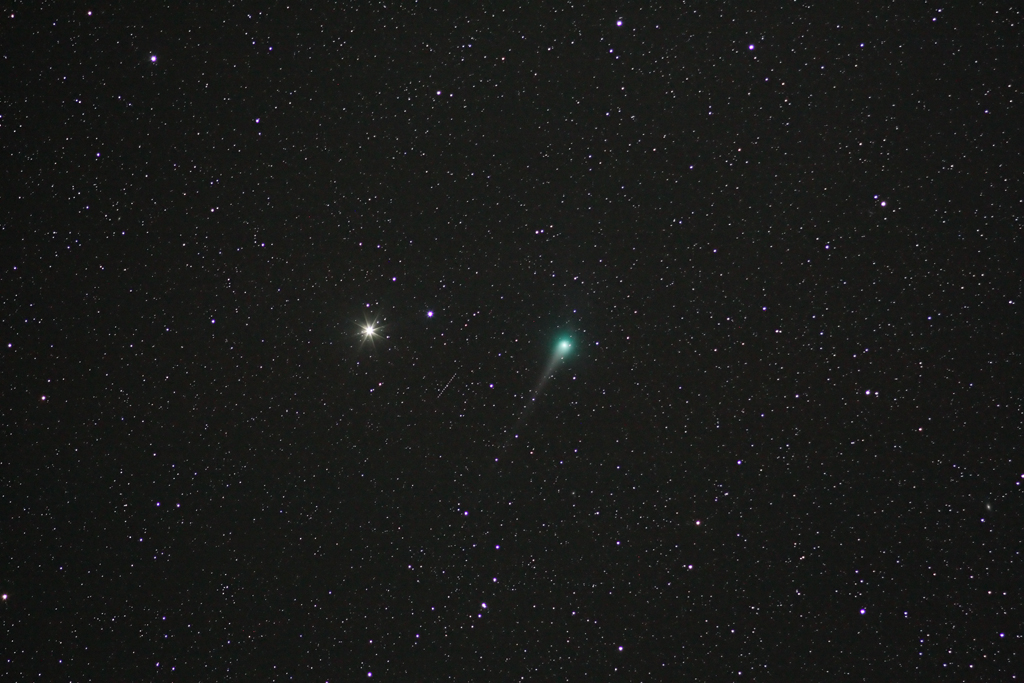The comet appears to be a first time visitor to the inner solar system. The NASA Swift Ultraviolet and X-Ray Explorer has been used to get images of the comet at ultraviolet and x-ray wavelengths. The data from Swift shows that it is shedding water at a rate of 3,000 litres per second (enough to fill an Olympic-sized swimming pool in about 15 minutes), and surrounded by a Jupiter-sized cloud of cyanogen and diatomic carbon, glowing green as these compounds fluoresces in sunlight.

This amazing photo was taken by Joe Wheelock of Fort Davis, Texas, USA, a couple of hours before the closest approach. He has the following notes:
I think I caught a tumbling satellite in between Comet Lulin and Saturn in this picture. Photo Details: Comet Lulin and Saturn Taken on Feb. 24, 2009 (12:05 A.M. CST) with 105mm Sigma telephoto piggybacked on my 16inch F/4.5 Newtonian Telescope Canon XSi DSLR 120sec. exp @ISO 1600 f/3.5. Image processed with Adobe Photoshop CS3, Digital Photo Professional, Blackframe Noise Reduction and Neat Image. In between Saturn and the comet appears to be a tumbling satellite?
The orbital path of Comet Lulin can also be visualized using the small body database maintained by JPL.
Comet Lulin currently has a brightness of visual magnitude +5.5. This level of brightness will drop over time for two reasons - first, due to increasing distance as the comet gets farther away from us. The second reason for a drop in brightness is a change in the amount of light reflected by the comet. As the comet reaches perihelion and starts moving farther from the sun, the amount of material blown off by heat and solar radiation will decrease, and the comet's extended halo and tail will decrease in size resulting in less light being reflected.
At +5.5, Comet Lulin will be difficult to spot in Toronto with the naked eye, although it should be fairly easy to see with binoculars for the next few days. Darker locations away from the middle of a city, like Lake Herridge, or Almonte, or the middle of Saskatchewan will be more ideal.





